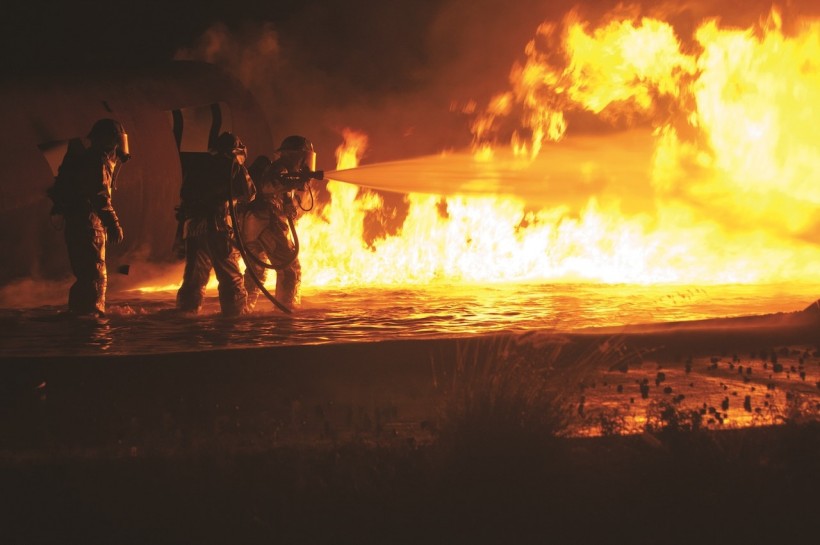Firefighters' important role in protecting people and properties from fire and other emergencies is undeniable. They are responsible for the rapid, safe, and efficient rescue during hazardous conditions. Although highly trained to perform such challenging tasks, firefighters are also vulnerable to risky situations that can cost their lives. In response to this challenge, a pair of scientists came up with the idea of developing a special sensor that protects firefighters.

Safeguarding Firefighters' Lives
University of Miami graduate students Chitvan Killawala and Umer Bakali created a new special sensor that can effectively detect the real-time presence of polycyclic aromatic hydrocarbons (PAHs) in the warm zone of structural fires.
In the laboratory, scientists use measurement tools such as mass spectrometers to measure the amount of PAHs in samples. Since these devices require industrial compressed gas cylinders, they are deployed as bulky instruments. Such practice is impractical, so there is little knowledge about the levels of PAHs that firefighters are exposed to.
It has been confirmed that PAHs are inside the warm zone of an active fire site where the rescue team conducts its activities. Unfortunately, the firefighters are not shielded with personal protective equipment inside the active fire zone.
Small commercially available sensors were used by Killawala and Bakali to measure the amount of vinyl chloride, benzene, and other substances. They slightly modified the parameters to enable them to test for polycyclic aromatic hydrocarbons.
The researchers tested the effectiveness of their device during controlled live burns conducted at the training facilities in Palm Beach, Miami-Dade, and Pinellas counties. During the testing stage, the PAHs showed interaction with the sensor, causing a drop in voltage in just a few seconds. The recorded increase in the levels of PAHs suggests the need for firefighters to wear protective suits while inside the warm zone. The interaction can also show the researchers that a readout can be compared to a baseline when no PAH is present.
Killawala and Bakali are improving their sensor before testing it further at fire training sites like the Fire-Rescue Training Center in Coconut Grove in Miami. They are hopeful that in the future, the sensor can be integrated into the gear carried by the firefighters to allow them to measure PAH levels while actively working inside the warm zone. They believe that it can also be deployed in fire stations to measure the PAH concentration in the air.
READ ALSO: Firefighters Deal With This Carcinogen Daily
What are PAHs?
According to the Centers for Disease Control and Prevention (CDC), PAHs are chemicals that occur naturally in crude oil, coal, and gasoline. They are produced by burning coal, wood, oil, and gas and can bind to small particles in the air. A person can get exposed to PAHs by various means, such as consuming grilled meat, eating foods contaminated with PAH particles, or breathing air that contain wood smoke.
The effect of PAHs on human health can be short-term or long-term. It depends on factors such as the amount that has entered the body, the length of exposure, and the body's response. Short-term symptoms include vomiting, eye irritation, and nausea. On the other hand, the long-term health effects of PAHs are characterized by liver damage, cataracts, and jaundice. Although PAHs have a low degree of acute toxicity to humans, they can develop cancer as the most significant endpoint.
RELATED ARTICLE: Colussus: The Firefighting Robot
Check out more news and information on Firefighters in Science Times.














